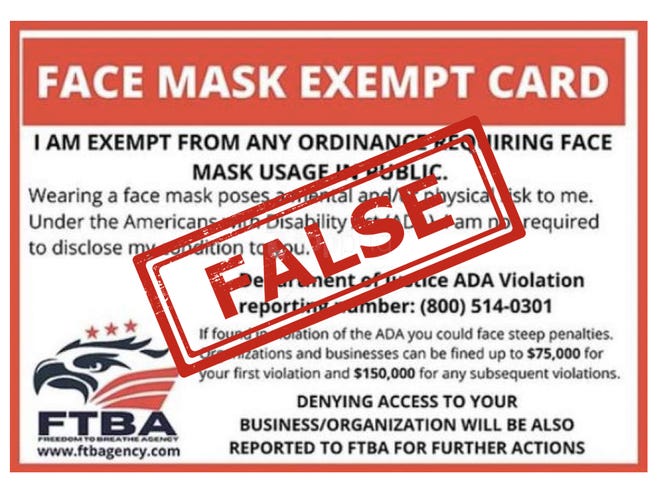
It’s being called the worst pandemic in modern history. I’m not talking about COVID-19 – thought it most certainly applies here, too – I’m talking about the dangerous, disturbing, and even deadly spread of misinformation online.
You can’t go on Facebook, YouTube, Twitter – to name a few – without seeing examples of it all over the place, from people posting old photos as if it’s current news and information to the more nefarious trolls, bots, deepfakes and online agitators.
No matter how much big tech companies and others pledge to contain this toxic spread, it’s up to us to actually do something about it.
Take a look at your own feeds
We’ve all done it – spotted that headline, photo, or emotional post from someone’s uncle or “friend,” that underscores everything we already think and feel – and passed it on. It’s human nature. Add a pandemic, failing trust in authority figures, feelings of fear and lack of control – all while stuck at home, and we have a perfect storm for an infodemic.
“The environment created by the pandemic has bred a multitude of falsehoods even as truth has become a matter of life and death,” write the authors of a new paper in Psychological Science who investigated why people believe and spread false information about COVID-19. “In the case of COVID-19, this misinformation comes in many forms – from conspiracy theories about the virus being created as a biological weapon in China to claims that coconut oil kills the virus.”
The fix, however tempting, is not to fight with, or shame people in social media circles, nor is it as easy as pointing people toward the truth. “Turning around those who buy into false information is not as simple as piercing epistemic bubbles (sic) with facts,” says Christopher Robichaud, senior lecturer in ethics and public policy at Harvard Kennedy School told the Harvard Gazette recently.
I took a peek at one of my childhood friends’ Facebook feeds and spotted 16 times he’s shared a debunked conspiracy theory, cheapfake video or politically-charged falsehood.
He’s one of only a handful of people I haven’t already “Unfriended” over misinformation – because I know he doesn’t do it knowingly or maliciously – and I’m cautiously optimistic that non-judgmental nudges (like this column) will help him and others flatten this curve of confusion.
With that goal in mind, here’s what we know so far is true, and what we know is not, followed by recommendations on how to tell the difference.
Five truths about COVID-19:
- TRUE: What we know about COVID-19 is changing rapidly
- TRUE: Masks help slow the spread of COVID-19
- TRUE: COVID-19 has a wide range of symptoms
- TRUE: Children can get critically ill from COVID-19
- TRUE: We don’t know the exact number of COVID-19 cases and death rates in the U.S.
Five lies about COVID-19:
- FALSE: Masks don’t help/Wearing a mask is dangerous
- FALSE: COVID-19 is no worse than the flu
- FALSE: We are at the tail-end of this pandemic
- FALSE: COVID-19 escaped from a lab
- FALSE: Coronavirus tests cause brain damage or plant substances on the brain
How to know what to believe
Unless you’re an actual expert in COVID-19, there’s a good chance you’re not the best person to figure out whether the latest claims are factually correct. Here are five pro tips to help figure out what’s true, what’s not, and most importantly, how not be the super-spreader of all that highly contagious misinformation yourself.
1. Slow down
A lot of false news spreads when you have an emotional reaction to a headline, photo, or video and then share, retweet, or forward it without having a clue where it came from.
I’ve adopted a new rule that I simply don’t get my news and information from Facebook – or any social media site – unless I know and trust the professional journalist who shares it. This is a basic skill I learned as a trained, fact-finding journalist myself: Check the source. Where did the information come from and how trustworthy is it?
2. Vet the source
Is the source of the information you’re about to share from a verifiable account, owned and maintained by a real person (check for real photos and accounts that are more than a few months old). Are you able to Google the person or group? Are the messages they share consistent? What makes that source the expert in the topic?
If the source is a news outlet, ask yourself a few questions: Have you heard of that outlet before? Does it have a website, searchable reporters, or a way to get in touch with it? There’s even a browser plug-in called NewsGuard that can help you out here. It rates more than 4,000 news websites based on their records of publishing accurate information.
3. Check the facts
No, YouTube videos are not “fact,” and being your own best fact-checker doesn’t have to take a ton of time.
Facebook offers tips to help you spot misinformation (which sadly, is a lot like the health warnings on cigarettes) but does including fact-checking through credible third-party news organizations including USA TODAY, Agence France-Presse (AFP), Reuters, Politifact, Factcheck.org, the Associated Press and others.
Snopes is another go-to for independent, nonpartisan reviews of urban legends, rumors and wild fake news claims. If some bit of information catches your eye, start with one – or a few – of these fact-checking sites to suss out the legitimacy of the report.
4. Learn to S-I-F-T
Washington State University at Vancouver digital literacy expert Mike Caulfield has made it his mission to fight misinformation online. At the core of his extensive research and training around “information hygiene” is the acronym SIFT, which stands for: Stop, Investigate, Find and Trace. We’ve covered similar information here, but Caulfield’s site teaches some genius moves, such as the hover, cross-checking with news sources, and the magic use of keyboard shortcuts – Ctrl-F (Cmd-F on a Mac) – to keep from getting suckered by “false-framing.”
If you do nothing else after reading this, visit Caulfield’s Infodemic website and learn the basic skills yourself.
5. Correct with caution
When I first read something outrageously incorrect passed on as a “fact,” I wrote the comment, “this is the most ignorant thing I’ve ever read online.” It didn’t go over well. Most people don’t like being corrected, let alone potentially shamed, especially via their own social media posts.
There’s often a shred of truth in misinformation posts, so experts say it’s better to find the truth, then show (and tell) why the post itself isn’t accurate. But, stick to the facts. Research shows people are less likely to continue sharing disinformation when someone calls them out on it – with a fact check.
I’ve gone so far as to leave a comment, “Now that you know this is false, the ethical thing to do is remove it. Will you?” So far, everyone has – so as passive-aggressive as it might seem – it’s working, and I’ll take it over more infodemic-spread any day.











